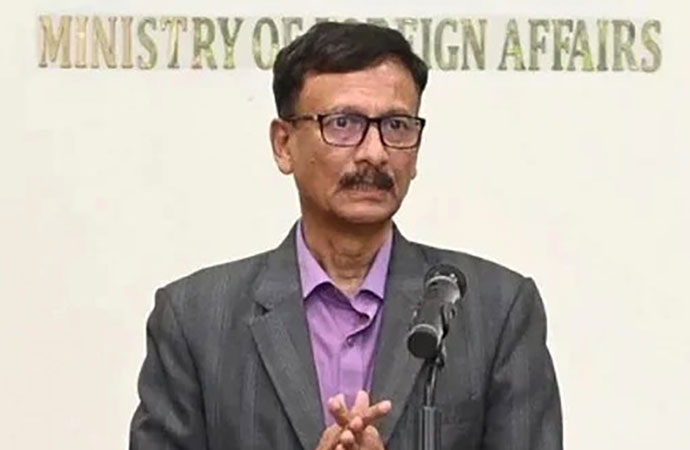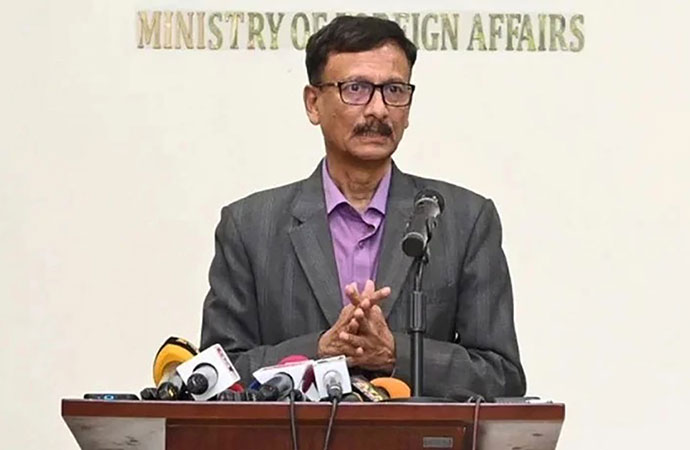Column

Okayama’s Kibitsu Shrine
With the conclusion of G20 Summit in the city of Osaka late last month, Japan is now assessing carefully the outcome and impact of this important gathering of the leaders of world's leading economy. The limelight of the show, however, had partially been stolen at the very end by the sudden announcement of US president Donald Trump about his desire to shake hands with North Korean leader Kim Jong Un at the truce village of Panmunjom during his scheduled short trip to South Korea right after the summit. As Trump left Osaka, media attention too shifted quickly from Osaka to Seoul and then to the truce village where trump had a one to one meeting with Kim. From the media scenario G20 dropped out all of a sudden, paving the way for a more interesting happening in the Korean Peninsula. Though Japanese leadership was hoping for a more insightful involvement of the media on the outcome of the summit, the rapidity of subsequent developments did not provide any such scope. Media is definitely not to be blamed for this sudden turn around, as this is the nature of working of the media where priority always goes to the important task of chasing after the news; a task that often forces them to cut short a running topical issue for the sake of another more important one emerging in the process. However, Japan is not completely out of focus of the news media, as the country is now at the center of attention for another unexpected new development involving two important East Asian neighbors.
Japan is currently locked in a bitter trade dispute with South Korea that began right after G20 leadership left Osaka wrapping up the two-day summit. This recently surfaced dispute has further eroded the importance of the gathering of the leaders of powerful nations of the world that jointly account for more than 85 percent of global GDP and represent almost two-third of humanity. One of the unfortunate outcomes is that, few more G20 related events scheduled later this year are now being ignored and overlooked by the media. However, Japan is moving ahead with the preparation of a number of G20 ministerial-level meetings later this year, including the one of foreign ministers to be held in Nagoya in November.Hosting the Osaka G 20 summit had definitely broadened the horizon of Japanese policymakers. Many of them are now actively engaged in thinking about some of the domestic issues also in global perspective. Tourism is one such issue that in recent days enjoying a booming trend in Japan with the number of inbound tourists continuously hitting a new height every year during the recent past. Hosting the G 20 related events is also providing plenty of opportunities to promote Japan's ever expanding tourist attractions to dignitaries and delegation members. A separate meeting of tourism ministers of G 20 is also scheduled to be held in Hokkaido in late October.
Japan's tourism industry is enjoying an unprecedented boom in recent years with the number of inbound tourists surpassing all expectations. More than 31 million foreign tourists visited Japan in 2018 and the government is now aiming to reach a new target of 40 million in 2020, the year when Tokyo is to host Olympics and Paralympics games. If the trend continues, authorities in Japan are predicting that an astounding 60 million inbound tourists might set foot in the country by 2030. This unprecedented growth of overseas visitors is helping Japanese economy in various ways, though it is not without negative fallouts.
Most of the foreign tourists traveling to Japan tend to visit some of the well known tourist spots in cities that are also known to them because of their charm and attractions publicized overseas. This is also having serious impact on some of the local communities that are overburdened with the flow incoming visitors. The city of Kyoto is probably the worst sufferer. 54 million tourists, both domestic and overseas, visited Kyoto in 2017. Kyoto is a historic city with a population of around 1.5 million. This unprecedented surge of inbound tourism is leading to overcrowding at heritage cites like temples and shrines and also having disruptive impact on public transport system. The same trend is also increasingly becoming visible in some of the well known tourist spots in the city of Tokyo as well as in few other cities. As a result, Japanese government these days is getting more involved in publicizing numerous other tourist attractions of the country to foreigners with the hope of attracting overseas visitors to those palaces as well. Hosting the G 20 summit in Osaka was a good opportunity for the country to act accordingly, as venues for a number of G 20 ministerial-level meetings were and are set in various locations in Japan.
Japan's Okayama Prefecture located in Kansai region is to host G 20 Health Ministers' meeting in October at Okayama City. The two-day ministerial meeting will bring delegates from 19 G 20 member states as well as European Union to this historic city that also boast for introducing next generation health promotion initiatives with the cooperation of local companies and financial institutions. However, taking the opportunity of hosting the meeting, the city is also actively promoting its tourist attractions with the hope of luring a chunk of visitors who go mostly to Kyoto and some other prime locations in Kansai region. And the main focus of publicity campaign that Okayama is resorting to for the purpose is to blend its past with what remains of those early glories in various forms.
Okayama Prefecture is known for the legend of Momotaro, a folk tale centering on the Peach Boy and his adventure to win over evil forces. In the story Momotaro fights the demon Ura and brings peace and harmony to the region. The story had been handed down from generations and in the process had gone through numerous interpretations that get mixed up with some of the realities of the region. There are a number of shrines and temples in Okayama that relate to the stories of Momotaro and local tourism department is focusing on those spots for attracting tourists who are familiar with the legend of the Peach Boy. In some of the later versions of the story, Momotaro has been transformed into Kibitsuhiko and continues his fight against the demon Ura. It is said that after the Ura was defeated his head was buried at Kibitsu Shrine. The shrine still exists in Okayama City and its current structure was built in 1697 by Ikeda Tsunamasa, the lord of Okayama domain. The shrine's architectural style is considered to be unique in Japan and an adjacent covered corridor stretching up to a length of around 400 meters serves as an added attraction where one can experience history simply by passing under that wooden structure. This is what Priest Hirano explained to a group of visiting journalists while escorting them through that mystic path surrounded by the lavish beauty of nature.
On the other end of the northern part of Okayama City, at a 400-meter high hill top stands a restored castle which is also linked to the legend. It has been mentioned in the mythology that Devil Ura lived in that castle in seclusion before he turned into a benevolent giant helping local people in various ways. The authorities of Okayama are now trying to put new lights on those mythical stories with the hope of promoting tourism and according to some local officials the initiatives are already bringing desired result.
(Tokyo, July 15, 2019)

























Leave a Comment
Recent Posts
Remembering Kalidas Karmakar ( ...
The art world remembers Kalidas Karmakar, a visionary whose creativity ...
An Evening with Shishir Bhatta ...
Cosmos Art Echo, the artist talk initiative of Gallery Cosmos and Cosm ...
Myanmar denies genocide, calls Rohingya crackdown co ..
Yes, of course
Earth’s average temperature last year hovered among ..
Bangladesh and Singapore: A Tale of Two Nations